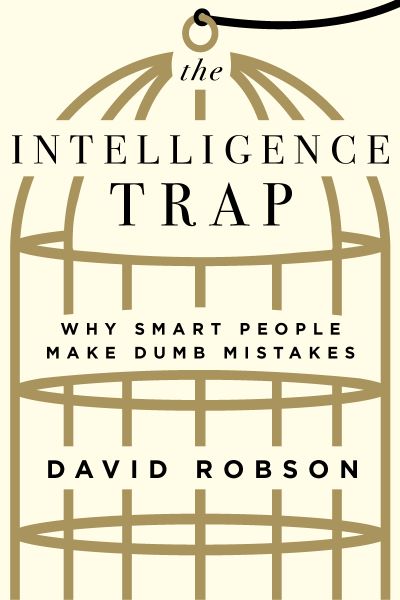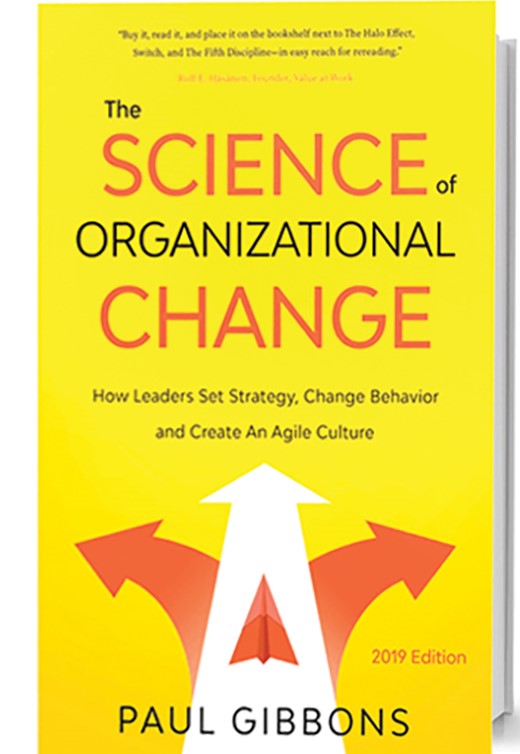One would be hard-pressed to find a word used more frequently in higher education than “change.” I constantly hear about change in student demographics and backgrounds, educational delivery systems, business models, donor priorities, cultural attitudes toward religion, and more.
What I don’t hear is the need for me to change. Especially not the need for me to change how I think about change itself, even though “change agent” and “leadership” are now virtual synonyms.
Yet leading change efforts is a key component of our responsibility as leaders in theological education, and our attitudes toward change, and our approaches to accomplishing it, inevitably affect how we pursue it. Therefore we need to ensure that we are not entrenched in unwarranted or unhelpful thinking about the goals of change and its dynamics.
Let me describe a handful of ways in which my thinking about change has recently been modified in response to my reading of three books.
Flawed thinking

The Intelligence Trap: Why Smart People Make Dumb Mistakes, by David Robson(Norton, 2019, 336 pp., $28).
In The Intelligence Trap: Why Smart People Make Dumb Mistakes (Norton, 2019), author David Robson not only wants to make us more aware of thinking errors that need to be recognized and corrected, but also seeks to warn us against assuming that “smart” people are invulnerable to them. Robson argues, rather, that intelligent, well-educated people may be more prone to mental errors than average people. This is because smart people are less likely to seek advice, more likely to build elaborate arguments to support their opinions, and especially prone to ignore their own biases and blind spots. Putting these educated people into a group (such as a faculty, a board, or an administrative team) can offer some protection against poor choices, but that protection is not automatic. Groups of very smart people can still make very bad decisions if they aren’t very careful.
Those of us who serve in higher education settings may find this analysis to be especially relevant and instructive. If so, we will want to incorporate the advice Robson offers to counter these tendencies, especially when attempting to navigate the complexity and controversy that frequently accompany change efforts. This heightened awareness of what contributes to skewed decision-making and how those factors might best be minimized in myself and others, is the first area in which my thinking about change has changed. Plus he has introduced the term “dysrationalia” into my vocabulary.
Unrealistic expectations
I have often found myself functioning with unrealistic expectations — for example, trying to fix too many things at once, anticipating that everyone involved in a process will see a path toward the goal as readily as I do, or expecting perfection as the ultimate outcome.

The Innovative University: Changing the DNA of Higher Education from the Inside Out, by Clayton M. Christensen and Henry J. Eyring (Jossey-Bass, 2011,512 pp., $33).
Those of us who believe in an omnipotent God can be especially susceptible to inflated expectations. We need to be careful that our theology interacts in appropriate ways with our goal-setting. To do so, we must differentiate healthy trust from presumptuous faith.
Presumption expects God to do more than He has promised and ironically becomes a temptation rather than an expression of robust faith. Healthy trust, conversely, allows God’s self-revelation to shape and temper our expectations for what can likely be accomplished in this life — without succumbing to the opposite error of functional rationalism.
Clayton Christensen, who popularized the notion of “disruptive innovation,” applies this notion of unrealistic expectation to educators in The Innovative University (Jossey-Bass, 2011). Christensen argues that many leaders aspire to have their schools become like Harvard, but because they do not have Harvard’s resources, they are instead doomed to perpetual frustration. Christensen suggests that for most, a more realistic aspiration would be to become like BYU-Idaho (an alternative likely influenced by his personal faith commitment).
Christensen has spurred me to ask myself why I think particular goals are in fact “doable.” Mind you, I still allow for supernatural dynamics, but I try to do so responsibly, not superstitiously.
Change goals can also be warped whenever they are emerge more from the leader’s ego than from higher, divine purposes. To counter this, I try to ask, “Why do I really want to see this change happen, and would I be just as happy if it was achieved but no one gave me any credit?” While we know the heart can be perplexingly deceitful, asking probing questions like this still seems to be a good way to activate the corrective voice of conscience.
Evidence-based change dynamics

The Science of Organizational Change: How Leaders Set Strategy, Change Behavior, and Create an Agile Culture, updated 2019 edition, by Paul Gibbons (Phronesis, 2019,446 pp., $20).
A more evidence-based approach to thinking about change dynamics is the burden of Paul Gibbons in The Science of Organizational Change (Phronesis Media, 2019). Here is his undergirding concern: people who make strong claims about how they’ve improved their company’s or organization’s performance are usually guilty of two logical fallacies: post hoc ergo propter hoc (i.e., X came before Y; therefore X must have caused Y) and causal reductionism (i.e., reducing to a single cause something that could have had multiples causes). “If you say some intervention you make caused an improvement in performance, you have to prove it was a necessary condition,” he reminds us, “meaning the improvement would not have happened without your help.”
Many of us are mindful of confusing correlation and causation and also of failing to take into account the multiple variables that are inevitably in play in complex entities like our schools. Yet it’s still amazing to see the silver bullets that are being offered all around us — promises to create corporate vitality, promote mission effectiveness, build motivated teams, and more. We all have seen the adverse effects on schools that have been whipsawed by the serial implementation of trendy panaceas prompted by the latest books read by their presidents. We might be well served to read the somewhat dated but still helpful Management Fads in Higher Education by Robert Birnbaum (Wiley, 2000).
Might unwarranted confidence in the latest popular change theory be a subtle but significant contributing factor to why so many change efforts are ineffectual? At the very least, I now find myself a bit more skeptical about the latest trendy leadership paradigms and management fads. I’m now much more confident in practices that are more classic or transcendent, while recognizing that even classic principles need to be thoughtfully contextualized to particular circumstances.
Conclusion
These examples of more recent adjustments join other alterations in my thinking about change which I made earlier in my leadership journey: (1) emulating how God describes a preferable future to encourage people to leave the comfort of the status quo, (2) not being surprised by opposition to change, (3) recognizing that resistance can spring from a variety of factors (some more commendable than others), (4) not taking disagreements personally, nor praying prematurely the imprecatory psalms!

Management Fads in Higher Education: Where They Come From, What They Do, Why They Fail, by Robert Birnbaum (Wiley, 2000, 272 pp., $45).
In addition to these, I am now much more cautious about uncritically and prematurely embracing as wisdom either my own thoughts, or those of my leadership team, or those of any other individual or group, regardless of education or intelligence level.
Similarly, I am now much more hesitant to embrace the latest leadership theory, recognizing that wisdom far more often resides in the transcendent than in the transient. And I am more mindful of the many ways in which ignorance, self-protectiveness, impatience, ego, and a host of other factors can warp a change agent’s judgment.
Finally, to decrease vulnerability on all these fronts, I am also now more sensitive to the variety of ways in which truly prudent thinking about change can be nurtured and recognized, and I am actively seeking to practice those disciplines, both personally and with my colleagues.
How might your thinking about change need to change?